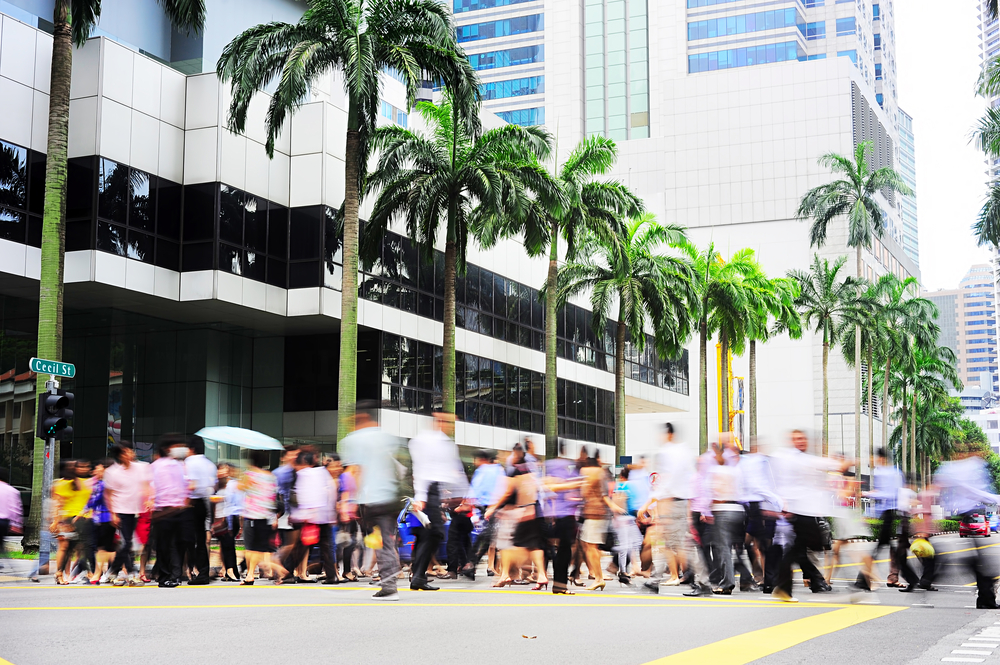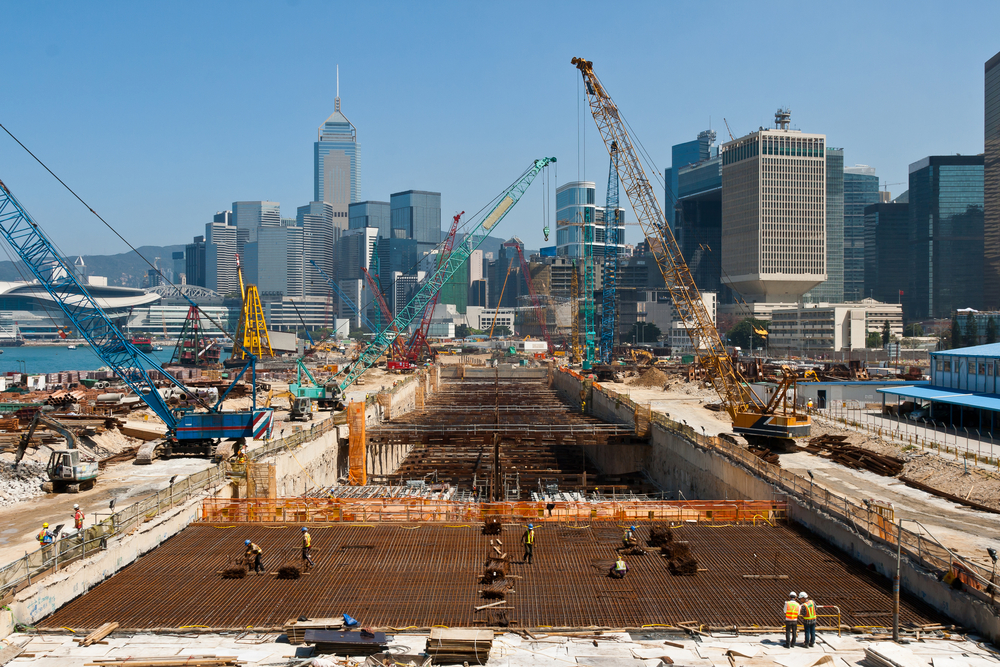Commercial real estate recoups as hybrid work model takes over work from home set up
Following its nadir in 2020, the future for Asia’s commercial real estate sector looks more secure as hybrid and more traditional office models regain the momentum from WFH

It’s easy to characterise the pandemic era as being shapeless.
It’s a fact that the period has taken on the time-looped persona of the classic movie Groundhog Day.
With offices, restaurants, parks, schools, shops, and a host of other services in countries around the region slipping in and out of operation to varying degrees, the past couple of years have certainly often felt like an endless series of days blurring into one.
Yet there have been some radical shifts throughout the pandemic so far as the sweeping predictions of early 2020 have been chewed over, considered and — often — dismissed.
We now know for certain that virtual cocktail parties are no substitute for real ones. The mass exodus from the globe’s big cities, as predicted by analysts, has yet to occur and is unlikely to do so. Likewise, the irreversible decline of the commercial real estate sector is another prediction that looks increasingly misguided.
“According to JLL’s recent survey of 1,500 employees across Asia Pacific, respondents have indicated that their ideal number of remote workdays is slipping,” says Roddy Allan, chief research officer, Asia Pacific for JLL. “People are increasingly missing the office, as home working fatigue rises, and productivity levels decline.”
Rewind to the dog days of 2020 and the picture looked very different. Indeed, many believed that the pandemic spelt game over for traditional office culture.

Lockdowns were enforced around Asia and much of the rest of the planet. While the situation wasn’t welcomed by everyone, many workers embraced the “new normal” of home officing. And for a while WFH did look like the future.
Many enjoyed the shorter commute to their kitchen table, sofa or home office, being able to avoid traffic and spend more time with their family. And it was easy to see the clear damage the pandemic was inflicting on the commercial office sector.
According to CBRE, office net absorption fell 34 percent year-on-year to 16.3 million sq ft net floor area (NFA) in H1 2020, the lowest first-half total in a decade.
While leasing activity in mainland China tier 1 cities began to recover in March as lockdowns were eased, all other major markets, especially Tokyo and major cities in India, saw a significant slowdown in demand in Q2 2020 as restrictions on mobility and business activity came into force.
Other notably weak markets included Hong Kong, which witnessed two consecutive quarters of negative net absorption and its lowest half-yearly figures on record.
The total value of transactions plummeted by nearly 40 percent in the year to September, as the number of deals fell by almost a third, according to Real Capital Analytics.
Indeed, the grim prognosis for commercial real estate was being borne out around the region: with key commercial real estate markets including Bangkok, Metro Manila and Singapore slammed by travel restrictions and investor hesitation. The existential question over whether office culture was really on its way out seemed like a pertinent one to pose.
Late in 2021, the picture has brightened considerably even as the pandemic has rumbled on. In stark contrast to its tidings from the same juncture last year, CBRE announced in August that the volume of investments in commercial real estate in APAC leapt 99 percent to USD41 billion in the second quarter from a year ago, returning to pre-pandemic levels. Increased investment in the logistics and industrial, office and retail sectors indicate an ongoing recovery of the region’s capital markets.

Despite the appearance of these robust green shoots, the devastation wreaked by the pandemic continues to have ructions. One of these is the presence of office space oversupply in major cities around the region.
“Office space vacancy is at an all-time high,” says Raymond Rufino, CEO of Neo Office PH, a sustainable developer in the Philippines who specialises in commercial real estate. “I think we’re reaching 15 percent vacancy (in Metro Manila). Vacancies were historically in the low single digits for certain sectors, so this figure is painful. If you’re a landlord and you want your tenant to renew, you must give concessions. It’s a tenant market.”
Preference for flexibility has grown, highlighting that hybrid work arrangements may be the way to go. The model remains top of mind for employees and should be considered by employers if they want to attract and retain talent
But at least it’s a viable market, indicating that rumours of the imminent death of the commercial real estate sector were — as the saying goes — greatly exaggerated. Indeed, reports like a recent study conducted by CBRE that found that almost half of 109 companies across Asia prefer dedicated seats for their staff suggest that a return to the pre-pandemic model has not been roundly rejected.
“Although a hybrid model has been adopted in more recent times, eventually it will be back to the environment before the pandemic,” says Prem Kumar, deputy managing director of Jones Lang Wootton in Malaysia.
“However, the platform of a WFH environment is very much more transparent now and as such the capability of adopting a similar arrangement in certain specific scenarios will become a reality.”
While some analysts see a gradual march back towards the “old normal” of office culture, other industry experts tout a much-trumpeted “hybrid” workplace model that is designed to support a distributed workforce of both in-office and remote workers.
“Preference for flexibility has grown, highlighting that hybrid work arrangements may be the way to go, with 90 percent of the 1,500 employees surveyed wanting to choose their working hours, or have flexible schedules,” adds JLL’s Allan. “This implies that hybrid work remains top of mind for employees and should be considered by employers if they want to attract and retain talent.”

As the needs of occupiers evolve, the primary change we are likely to see in the office sector is the redesigning of spaces to make offices safer, healthier, and more sustainable.
Analysts, however, do not foresee a significant impact on the amount of space leased, as companies will be looking to use their workspaces differently.
They say there is likely to be a greater focus on using space better so workers are happier and more productive.
Companies—not to mention developers—will also be forced to up their game to create appealing and hygienic spaces for employees.
“In the future, offices will feel more like home,” says Ken Ip, assistant general manager and group head of marketing, B.S.C. Group. “There will be a lot in common between this new form of workplaces and domestic workspaces. Features of these environments will include improved cosiness, softened acoustics and more relaxed vibes.
“These can be achieved through furniture, specific fabrics and furnishings and even providing music in the workplace. Offices should let in more natural light where possible to give a homey ambience and be enhanced with improved air-conditioning systems for cleaner air quality or with open windows for increased ventilation.”
With these lofty visions of the workplace future doing the rounds, it’s little wonder that enthusiasm appears to be growing among employees for a return to the office. That’s good news for developers and investors in the sector, who can look forward to witnessing a resurrection instead of a burial.
“The office sector is supported by healthy market fundamentals, and we continue to see positive occupier sentiment across Asia Pacific,” concludes JLL’s Allan. “This gives us reason to believe that markets will steady over the coming months, and office conditions will stabilise before early 2022. We forecast rents will begin recovering in 2023.”
The original version of this article appeared in Issue No. 169 of PropertyGuru Property Report Magazine.
Write to our editors at [email protected].
Recommended
Why everyone is moving to Selangor and Johor: Malaysia’s real estate comeback
Malaysia’s upturn in fortunes is especially prevalent in secondary destinations such as Selangor and Johor
Penang’s silicon boom: How the US-China tech war is supercharging local real estate
Penang’s booming semiconductor industry has created ripples within the local real estate sector
New leader, new opportunities: How Hun Manet is shaking up Cambodia’s real estate game
Hun Manet is overseeing decent economic growth and widening access to the country’s real estate market for foreigners
Singapore embraces inclusive housing reforms amid resilient demand
The Lion City’s regulatory strength continues to exert appeal for international investors








